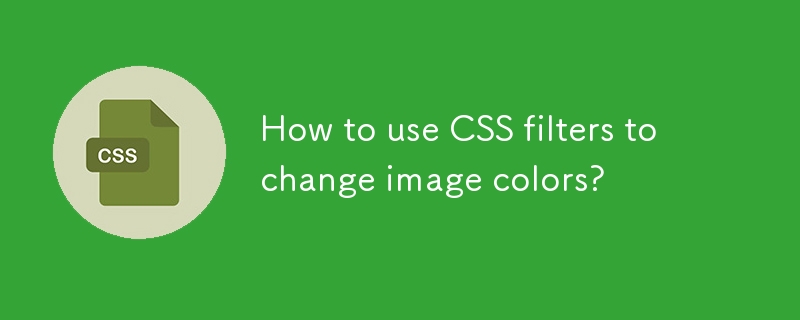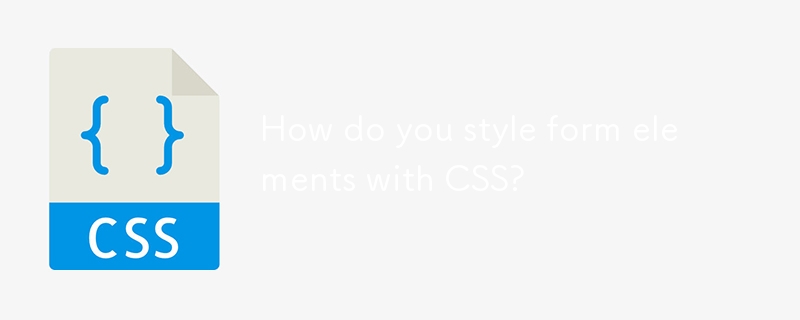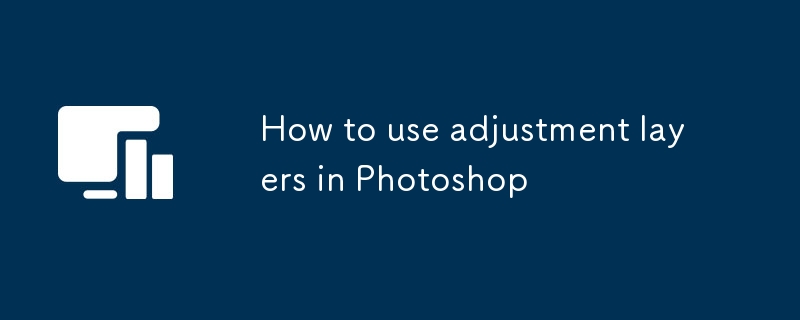Found a total of 10000 related content

How To Get Smoother Rounded Corners
Article Introduction:Border-radius — don’t ya just love it? It’s easily over-used, but done nicely and not too often, rounded corners can add a touch of class to pretty-much anything.
However certain color combinations can produce a somewhat jagged effect, even with t
2025-03-05
comment 0
933

How to Create 3D Text With CSS3
Article Introduction:This tutorial demonstrates creating a 3D text effect using only CSS3's text-shadow property, avoiding images, plugins, or canvas. The illusion of depth is achieved by layering multiple text shadows with subtle color and offset variations.
This imag
2025-03-02
comment 0
1073

How to change comment color in VSCode?
Article Introduction:Modifying the comment color in VSCode can be achieved by changing the theme or custom syntax highlighting. 1. Replace the theme: Search and install high-readable themes such as OneDarkPro, MaterialTheme, Dracula and other high-readable themes in the extension store. After installation, restart or switch the theme will take effect. 2. Custom comment color: Open the settings.json file through the command panel, add the "editor.tokenColorCustomizations":{"comments":"#Custom color code"} rules, and set appropriate colors under different background colors, such as dark
2025-07-23
comment 0
876

VSCode how to change error squiggle color?
Article Introduction:To modify the color of the wrong wavy lines in VSCode, you can follow the following steps: 1. Open the settings.json file, use the shortcut keys Ctrl Shift P or Cmd Shift P and enter "Preferences:OpenUserSettings(JSON); 2. Add the "workbench.colorCustomizations" object in the configuration and set "editorError.foreground" as the color code you want; 3. If the color does not take effect, it may be that the theme has overridden the default settings. You can try changing the theme or adding a more specific one
2025-07-29
comment 0
714

How do you apply gradients to shapes on a canvas?
Article Introduction:To apply a gradient to a Canvas shape, you need to follow the following steps: 1. Use createLinearGradient() or createRadialGradient() to create a gradient and define its coordinate range; 2. Add one or more color nodes through addColorStop() to set the gradient color; 3. Assign the gradient object to fillStyle or strokeStyle attributes; 4. Use fillRect, arc and other drawing methods to create a shape, and the gradient will be automatically filled. Note that the gradient is based on the canvas coordinate system. When moving the shape, the gradient coordinates need to be readjusted to maintain visual consistency. The final effect depends on the precise control of coordinate settings and color transitions.
2025-08-04
comment 0
258


@keyframes CSS: Best code examples
Article Introduction:CSS@keyframes is used to define the various stages and changes of animations. 1) Basic use: define animations through @keyframes, such as fadeIn changing from transparent to opaque. 2) Loop animation: Use the infinite keyword to create continuous rotation effect. 3) Performance optimization: Use the will-change attribute to improve animation fluency. 4) Accessibility: Adjust animations through prefers-reduced-motion media query to adapt to user preferences. 5) Flexible control: combine CSS variables to achieve color change animation. 6) Adjust the effect: Make the animation more natural by modifying the duration and timing-function.
2025-06-18
comment 0
877

How to draw a simple rectangle or circle on a canvas?
Article Introduction:To draw rectangles and circles on HTMLcanvas, you must first set the canvas element and get the drawing context. 1. Create a tag and get the context with JavaScript; 2. Use fillRect() or strokeRect() to draw a rectangle, the former fills the color, and the latter only strokes; 3. Use the arc() method to draw a circle, and use fill() or stroke() to decide the fill or stroke effect; 4. Pay attention to calling beginPath() to start a new path, check the canvas size and scaling issues to ensure that the graphics are displayed correctly.
2025-06-30
comment 0
196

How to use CSS filters to change image colors?
Article Introduction:Use CSS filters to dynamically adjust the image color; 2. Hue-rotate() can change the hue and achieve color offset; 3. Grayscale() can remove or partially retain the color, which is often used for hovering effects; 4. Sepia() combined with saturate() can create retro effects; 5. Invert() is suitable for dark mode, but color distortion needs to be paid attention to; 6. Monochrome coloring can be simulated by combining brightness(0) and hue-rotate(); 7. Multiple filters can be used in superimposed, and the order affects the visual effect; 8. The filter performance is good but overuse should be avoided. It is recommended to use smooth animation with transition, and finally it can be achieved more accurately through SVG or canvas.
2025-08-03
comment 0
747

How to make an image look like a painting in Photoshop
Article Introduction:The key to using Photoshop to convert photos into natural and textured painting style is to use filters reasonably, superimpose textures, and adjust colors and details. 1. Use artistic effect filters such as "oil painting" and "watercolor" in the "Filter Library" to adjust the parameters appropriately to quickly obtain the style effect; 2. Overlay the canvas or paper texture layers, and enhance the texture of the picture through "Soft Light" or "Overall" blending mode; 3. Adjust the color and contrast through tools such as "Hue/Saturation", "Curve", and "Color Balance" to enhance the overall atmosphere; 4. Finally, use "Intelligent Sharpening", "Liquefaction" and brush tools to enhance the edges and brushstrokes, making the picture more hand-painted. Each step should be kept natural and avoid over-treatment.
2025-07-09
comment 0
1038

How to add text to a photo in Photoshop
Article Introduction:Use Photoshop to add text to photos to follow the following steps: 1. Select the right tool: Use the text tool (T-shaped icon) to enter text, select horizontal or vertical rows, and set the font, size and color in advance; 2. Adjust the style and position: Adjust the style through the option bar or panel, such as adding a translucent background box, stroke effect, changing color contrast, etc.; 3. Let the text be integrated into the picture style: match the font according to the picture style, try embossing effects, blending modes, projection and other methods to enhance the sense of nature.
2025-07-13
comment 0
1022

How do you style form elements with CSS?
Article Introduction:Using CSS to beautify form elements not only improves the appearance of the website, but also enhances usability. First, improve readability by setting a unified font, margin and border style, such as setting the font size of input and textarea to 16px, the inner margin is 10px, the border color is #ccc, and changing the border color to #888 when focusing. Second, customize the button style to enhance visual hierarchy, such as using #007BFF as the main color, which becomes #0056b3 when hovering, and add a transition effect. Third, use Flexbox or Grid to create responsive layouts, such as vertical arrangement on mobile devices, use row arrangements on desktop and set the input box width to 48%. Finally, reset the browser default style and unify the side
2025-07-17
comment 0
733

How to create a loading spinner with CSS?
Article Introduction:Creating a CSS loading spinner requires only a div element as the HTML structure. 2. Use CSS to set width, height, border, rounded corners and animation properties, and achieve rotation effect by changing the border color and applying 360-degree rotation animation. 3. You can customize the size, speed, color and border thickness to match design needs. 4. Center the rotator in the container or center of the screen through the flex layout. In the end, a lightweight, modern browser-compatible loading indicator can be achieved with just a small amount of code, which is suitable for AJAX loading, page transition and other scenarios.
2025-07-25
comment 0
815

How to use adjustment layers in Photoshop
Article Introduction:Adjustment layer is the core tool used for non-destructive editing in Photoshop. It is superimposed on the original image without changing the original pixels, and supports flexible adjustments such as color, brightness, and contrast. Common types include curves, color levels, color balance, saturation, black and white, etc. Select to use by clicking the "Create new fill or adjust layer" button in the layer panel. The biggest advantage is that local adjustments are achieved through masks. For example, after adding the "curve" adjustment layer, use the brush tool to erase specific areas (such as faces) on the mask, and only darken the background. In addition, mixing modes such as "Soft Light" and "Overlay" can be set to enhance the expressive effect, and some photographers use the "Color" mode to unify the tone style. Practical tips include: Hold down the Alt key and drag the mask to achieve multiple adjustments
2025-08-03
comment 0
985

How can Photoshop be used to create compelling before-and-after image presentations?
Article Introduction:The key to using Photoshop to create a comparison picture before and after is to clearly present the two versions of the images to facilitate observation of the differences. 1. Use a split-screen layout, place the images side by side or up or down on the same canvas, maintain the same angle, zoom level and composition, and add dividers to enhance visual distinction; 2. Use markers to highlight key changing areas, such as using circle markers, arrows or text boxes to guide the sight, the marker color should be soft and the text is concise; 3. Keep the color consistent with the size, ensure that only the edited content has changes, and avoid interference due to brightness, contrast or individual filters. These steps help improve the professionalism and readability of the comparison chart.
2025-07-08
comment 0
518

How to change the theme in Microsoft Edge
Article Introduction:Replacing themes in Microsoft Edge can be achieved through the built-in store selection or importing custom themes. The specific steps are as follows: 1. Select the built-in theme or enable dark mode through the "Appearance" option in the settings; 2. Access the Microsoft Edge theme store to install favorite themes online; 3. Import the .crx format theme downloaded by Chrome Store, modify the suffix and decompress it and load the extension through developer mode; 4. Select "Use Custom Color" in the "Color" setting and enable the timed switching function, which can automatically enable dark mode from sunset to sunrise to improve night browsing comfort. Although changing the theme is simple, it should be noted that some themes need to be enabled manually or restarted to take effect.
2025-07-26
comment 0
946

How to export a canvas drawing as an image file?
Article Introduction:The key to exporting HTML5Canvas drawings as image files is to use the toDataURL() or toBlob() method. 1. toDataURL() can directly generate base64 image links, which are suitable for quick display or downloading, but may fail due to cross-domain problems; 2. toBlob() returns the Blob object through a callback, which is more efficiently suitable for uploading or processing large images, and supports specified format and compression ratio; 3. When exporting, you need to pay attention to transparent background and color offset issues, and if necessary, you should pre-process the canvas content to ensure the output effect. Master the basic usage of these two and adjust the details according to your needs to complete the export.
2025-06-25
comment 0
620

How to use the magic wand tool in Photoshop
Article Introduction:Use Photoshop's magic wand tool to quickly select areas of similar colors, suitable for background deletion and simple cutouts. The core is to master the setting options and use them in conjunction with other functions. The operation steps are as follows: 1. Press the shortcut key W to select the magic wand tool, click the image area to select the area; 2. Press Shift to add the selection, Alt or Option to subtract the selection; 3. Adjust the "Tolerance" value to control the selection range, the smaller the value, the more accurate it is; 4. Check "Continuous" to select only the connected areas, cancel the entire image to select the entire image; 5. Enable "Sample all layers" to select the color based on the overall effect of multiple layers. Magic wands are suitable for scenes with single colors and obvious contrast, and are not suitable for situations where colors are similar, edges are blurred or require high precision. Practical techniques include scaling canvas, combining "select"
2025-07-21
comment 0
499



















